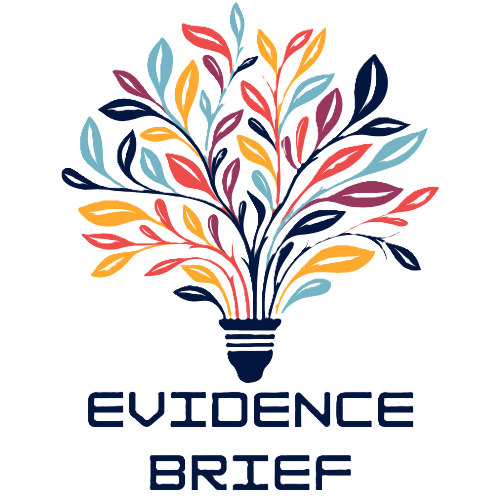In a world where emojis often speak louder than words, mastering communication is more crucial than ever. Communication education isn’t just about learning to speak; it’s about crafting messages that resonate, inspire, and sometimes even make people chuckle. Whether it’s presenting in front of a boardroom full of suits or simply chatting with friends over coffee, effective communication can turn a mundane conversation into a memorable exchange.
Communication Education
Communication education focuses on developing skills that facilitate effective interactions in various settings. It encompasses verbal and non-verbal elements that create impactful messages.
Definition and Importance
Communication education refers to the process of teaching methods and principles that improve sharing information. It’s essential for personal and professional growth, linking people across diverse cultures and contexts. Mastery in communication enhances confidence, promotes collaboration, and fosters understanding, enabling individuals to engage meaningfully. Various studies reveal that strong communication skills directly correlate with academic and career success. Effective communicators influence decision-making, lead discussions, and inspire change within their communities.
Historical Context
The roots of communication education trace back to ancient civilizations, where rhetoric flourished as a vital skill. Historically, orators in Greece and Rome taught persuasive speaking, setting the foundation for modern communication studies. During the 20th century, the discipline expanded, embracing a range of communication forms such as print, broadcast, and digital media. Advancements in technology significantly influenced pedagogical methods, prompting educators to adapt traditional approaches to new platforms. Today, communication education integrates critical thinking and media literacy, reflecting the complexities of contemporary society. Various institutions now offer specialized programs that prepare students for the evolving communication landscape.
Key Theories in Communication Education
Understanding key theories enriches communication education, providing frameworks for effective interactions. Theories encompass models and contemporary approaches, each playing a vital role.
Major Communication Models
Models serve as foundational tools in the study of communication. Shannon and Weaver’s model introduces the concept of a sender and receiver, outlining how messages travel through channels. Berlo’s SMCR model emphasizes source, message, channel, and receiver, illustrating the dynamic nature of communication. Schramm’s interactive model highlights the importance of feedback, showcasing the continuous flow of information. These models inform both teaching methods and practical application, enhancing communicators’ skills in diverse settings.
Contemporary Approaches
Recent approaches focus on integrating technology into communication education. Problem-based learning encourages students to tackle real-world challenges, fostering critical thinking and collaboration. The flipped classroom model promotes active engagement, allowing learners to explore materials at their own pace. Culturally responsive teaching emphasizes understanding diverse perspectives, which is essential in multicultural environments. These contemporary strategies equip students with adaptive communication skills, essential for navigating today’s complex interactions.
Communication Education Methods
Communication education employs a variety of methods to enhance skills. Traditional instructional techniques focus on lectures, discussions, and role-playing exercises. These methods emphasize foundational skills like public speaking and active listening. Textbooks often provide structured frameworks to guide learning. This approach ensures that students grasp essential communication principles before navigating more complex topics.
Innovative teaching strategies have emerged, incorporating technology and interactive elements. Blended learning combines online resources with face-to-face interactions, promoting flexibility. Gamification engages students through competition and rewards, reinforcing learning outcomes. Project-based learning encourages collaboration and creativity, allowing students to apply communication skills in real-world scenarios. Social media platforms serve as tools for practicing digital communication, fostering engagement with diverse audiences.
Challenges and Opportunities
Communication education faces significant challenges and promising opportunities in today’s landscape.
Barriers to Effective Communication Education
Barriers exist that hinder effective communication education. Limited access to resources often restricts learning experiences. Inadequate teacher training can compromise the quality of instruction. Students may struggle with large class sizes, which diminish personalized engagement. Cultural differences frequently create misunderstandings, and technology gaps can hinder student participation. These obstacles collectively affect the development of essential communication skills.
Future Trends in Communication Education
Future trends indicate a shift towards more integrated and technology-driven approaches. Virtual reality offers immersive learning experiences, enhancing engagement in communication exercises. Increased emphasis on emotional intelligence will likely feature prominently in curricula, fostering empathy in interactions. Online platforms facilitate global collaboration, allowing students to connect with diverse peers. As the job market evolves, adaptability in communication will become essential. Continuous adaptation to technological advancements will shape communication education’s future, preparing students for complex global interactions.
Mastering communication skills is crucial in today’s fast-paced world. As individuals navigate various personal and professional landscapes, effective communication fosters deeper connections and enhances collaboration. The evolution of communication education reflects society’s changing needs, integrating technology and innovative teaching methods to prepare students for future challenges.
By embracing these advancements, learners can develop the adaptive skills necessary for success in a diverse and interconnected environment. As communication continues to shape interactions, investing in education that prioritizes these competencies will empower individuals to influence change and inspire others. The journey toward effective communication is ongoing and vital for personal growth and societal progress.


